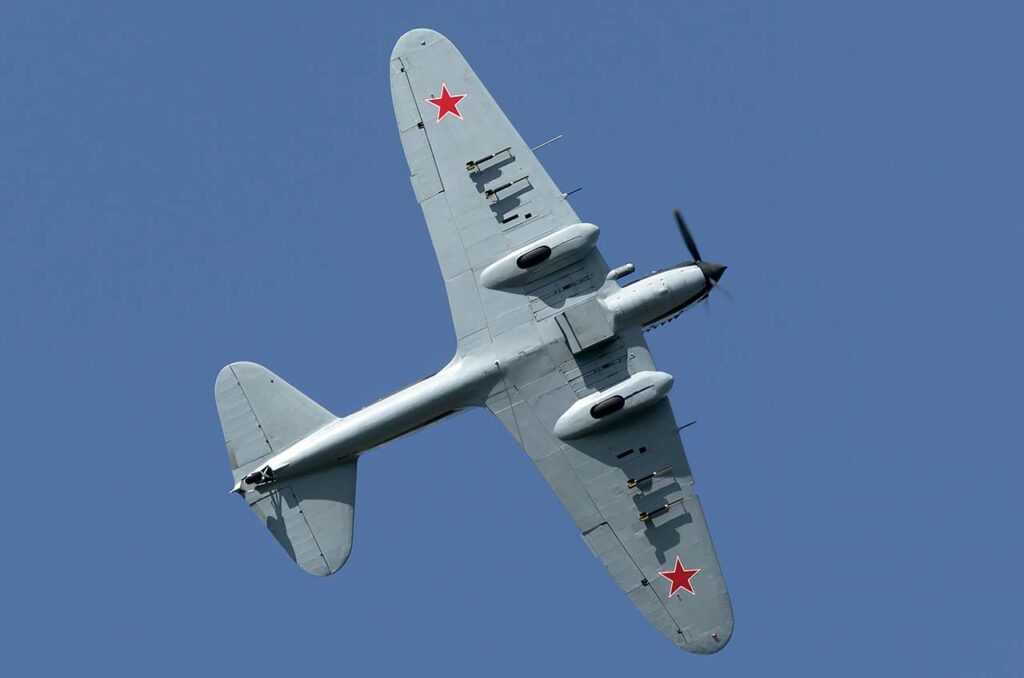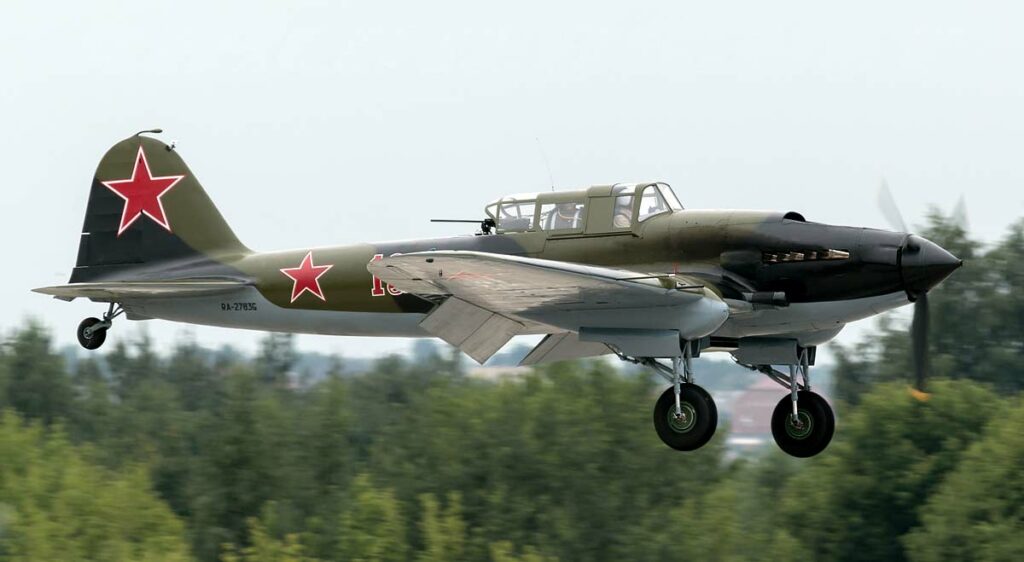The Ilyushin Il-2 Sturmovik, a robust Soviet ground-attack aircraft of WWII, famed for its armor and heavy armament, vital in Eastern Front operations.
This article provides an in-depth analysis of the Ilyushin Il-2 Sturmovik, a key Soviet aircraft of World War II. It covers the historical context behind its development, the design philosophy, performance characteristics, and its extensive military use. The history section details why the Il-2 was developed, its first flight, and the strategic goals of its design. The design part elaborates on its unique armor and armament, highlighting technical specifications. The performance segment compares the Il-2 with its contemporaries, emphasizing its role on the battlefield. The military use section examines its combat record, operational roles, and eventual phasing out, painting a comprehensive picture of this formidable aircraft.
The Ilyushin Il-2 Sturmovik, famously known as the “Flying Tank,” was a Soviet ground-attack aircraft that played a crucial role on the Eastern Front during World War II. Its significant impact on the war’s outcome earned it an iconic status in military aviation history.

History of the Development of the Ilyushin Il-2 Sturmovik
In the late 1930s, as the threat of war loomed, the Soviet Union recognized the need for a robust ground-attack aircraft to support its vast ground forces. The development of the Il-2 Sturmovik was initiated by the Ilyushin design bureau, led by Sergei Ilyushin, in response to a 1938 Soviet Air Force requirement.
The primary objective was to create an aircraft capable of providing close air support to ground troops while withstanding significant enemy fire. The project emphasized durability, firepower, and the capacity to engage both ground and air targets effectively.
The Il-2 Sturmovik first flew on October 2, 1939. Its development was heavily influenced by the evolving nature of armored warfare and the Soviet military doctrine which emphasized combined arms operations. The aircraft’s design and deployment were closely aligned with the needs of the Red Army, reflecting the strategic shift towards a more integrated approach to warfare.
Design of the Ilyushin Il-2 Sturmovik
The Il-2’s design was revolutionary, featuring a heavily armored tub that protected the engine, cockpit, and fuel tank. This armor, made of hardened steel, was up to 12 mm thick, effectively shielding the pilot and critical components from ground fire.
The aircraft was 11.6 meters (38 feet) long with a wingspan of 14.6 meters (48 feet). It weighed around 4,360 kg (9,612 lbs) empty and up to 6,000 kg (13,227 lbs) when fully loaded. The design allowed for a substantial payload but limited its speed and agility.
One of the significant design features of the Il-2 was its wide, straight wing, which provided excellent low-speed handling, crucial for ground-attack missions. However, this design also made the aircraft vulnerable to faster enemy fighters.
Performance of the Ilyushin Il-2 Sturmovik
Powered by a Mikulin AM-38 liquid-cooled V12 engine, the Il-2 produced up to 1,700 horsepower (1,268 kW). This engine enabled a top speed of around 414 km/h (257 mph) and a service ceiling of 5,500 meters (18,000 feet). Its operational range was approximately 720 kilometers (447 miles).
Compared to other ground-attack aircraft like the German Junkers Ju 87 Stuka, the Il-2 was faster and significantly more armored, making it more survivable in combat. However, it lacked the agility of dedicated fighters, relying on its armor and firepower for defense.

Military Use and Combat of the Ilyushin Il-2 Sturmovik
The Il-2 was armed with a combination of cannons, machine guns, rockets, and bombs, making it a formidable platform for ground-attack missions. Initially designed as a single-seater, a rear gunner position was later added to improve its defense against enemy fighters.
The aircraft saw extensive use in the Eastern Front, participating in major battles like Stalingrad, Kursk, and the Berlin offensive. Its ability to target enemy tanks, fortifications, and troop concentrations was pivotal in numerous Soviet victories.
Competing against the likes of the German Fw 190 and Bf 109, the Il-2’s survivability and firepower were unmatched in the ground-attack role, though it often required fighter escort to protect against enemy air threats.
The Il-2 was not widely exported due to its specific role in the Soviet war effort. Post-WWII, it was gradually phased out and replaced by more advanced aircraft, marking the end of its service life.
The Ilyushin Il-2 Sturmovik’s contribution to the Soviet war effort during World War II cannot be overstated. Its robust design, powerful armament, and versatility on the battlefield made it a key factor in the Red Army’s successes. While its design was a product of its time, the Il-2’s legacy as a groundbreaking ground-attack aircraft remains a significant chapter in military aviation history.
Back to the Warbirds section.